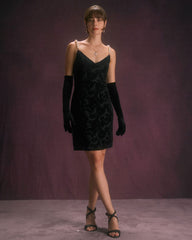Decoding Dress Codes: A Guide to Formal and Semi-Formal Dresses
RIHOAS Edit
When it comes to dressing up for special occasions, understanding the dress code is key to making a lasting impression. Formal and semi-formal events require distinct attire that strikes the right balance between elegance and comfort. In this blog, we'll explore the world of formal dresses and semi-formal dresses, offering guidance on what to wear for different occasions and how to accessorize for a flawless look.
1. Formal Dresses: The Epitome of Elegance
Formal events demand a level of sophistication that calls for formal dresses. These occasions include weddings, galas, opera performances, and black-tie parties. Here are the essential elements of formal dresses:
1) Length: Formal dresses are typically full-length, extending to the floor. This adds an air of grandeur and creates a truly elegant silhouette. A popular choice for formal events is the classic ballgown, but A-line, sheath, and mermaid styles can also be appropriate.
Shop the Edit:The Purple Cowl Neck Cutout Back Maxi Dress;The Navy Floral Slip Mermaid Maxi Dress;The Brick Red Floral Slit Maxi Dress
2) Fabric: Luxurious fabrics such as silk, satin, chiffon, or velvet are commonly used for formal dresses. The choice of material often depends on the season and venue of the event.
Shop the Edit:The Navy Square Neck Satin Slip Maxi Dress;The Brick Red Sleeveless Split Slip Maxi Dress;The Wine Red Cowl Neck Satin Maxi Dress
2. Semi-Formal Dresses: Versatile Elegance
Semi-formal events offer a more flexible dress code, allowing you to express your personal style while maintaining an air of sophistication. These events include cocktail parties, dinner parties, and some daytime weddings. Here's what to keep in mind when choosing a semi-formal dress:
1) Length: Semi-formal dresses are typically knee-length or just below the knee, although tea-length dresses are also suitable. These lengths offer a balance between formality and comfort.
Shop the Edit: The Green Halter Ruched Velvet Midi Dress;The Green V Neck Sheath Velvet Midi Dress;The Purple Textured Satin Slip Mini Dress
2) Fabric: Fabrics for semi-formal dresses can range from silk and lace to chiffon and crepe. Lighter materials work well for semi-formal daytime events, while heavier fabrics can be chosen for evening affairs.
Shop the Edit: The Navy Square Neck Satin Slip Midi Dress;The Green Backless Satin Mermaid Midi Dress;The Black V Neck Pearl Strap Burnout Mini Dress
3) Color: Semi-formal dresses come in a broader range of colors. You can opt for classic black, navy, or gray, or embrace lighter and brighter hues. It's essential to consider the event's time of day and venue when choosing the color of your dress.
Shop the Edit: The Red Diamond Slip Velvet Midi Dress;The Black V Neck Sequin Slit Wrap Mini Dress;The Gold U Neck Sequin Fringe Slip Mini Dress
Conclusion
Formal and semi-formal dresses play a crucial role in helping you navigate the complex world of dress codes. Whether you're attending a grand gala or a stylish cocktail party, understanding the distinctions between these dress codes will ensure that you look and feel your best. Remember to complement your chosen dress with the right accessories, shoes, and a confident attitude to create an unforgettable ensemble for any occasion.
















